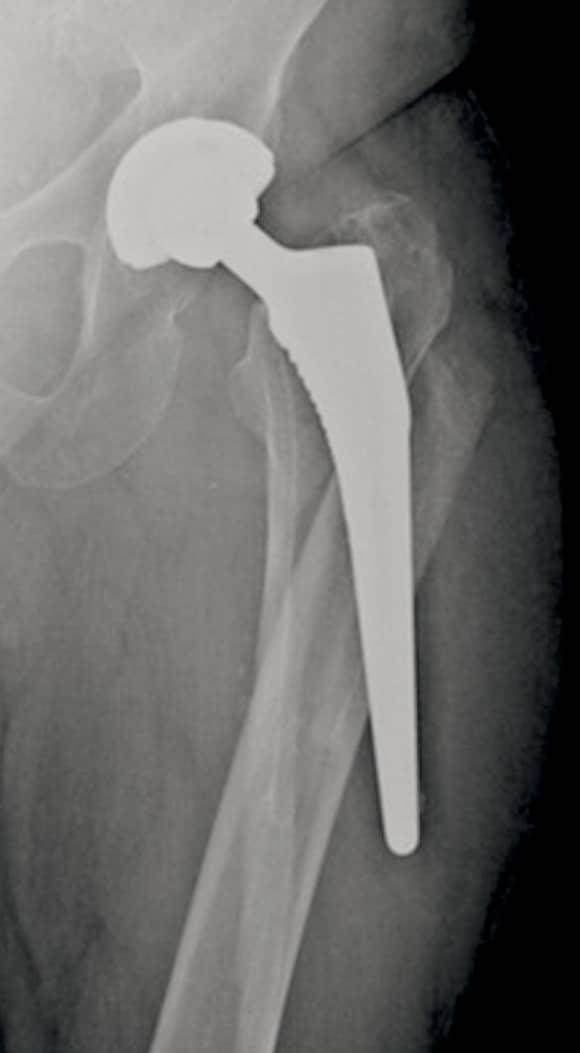
With increasing numbers of THA and hemiarthroplasties being performed, there has been an associated rise in periprosthetic hip fractures.
Periprosthetic hip fractures may occur intraoperatively or postoperatively, and the vast majority involve the femoral component.
A study by DJ Berry M.D., utilizing data from the Mayo Clinic Joint Registry, showed that intra-operative periprosthetic femur fractures occurred more commonly during revisions (20.9%) vs primary THA (3.6%) and in uncemented implants (5.4%) vs cemented (0.3%).
The remainder of this review will focus on post-op periprosthetic femur fractures.
Studies have suggested that aseptic loosening of the femoral component is a strong predisposing factor for fracture. Increasing age and BMI, as well as osteoporosis, are also risk factors.
The Vancouver Classification System:
Type A: involving the trochanteric region
-AG (involving GT)
-AL (involving LT)
Type B: at the level of the implant
-B1: well-fixed stem
-B2: loose stem with good bone stock
-B3: loose stem with poor bone stock
Type C: below the implant
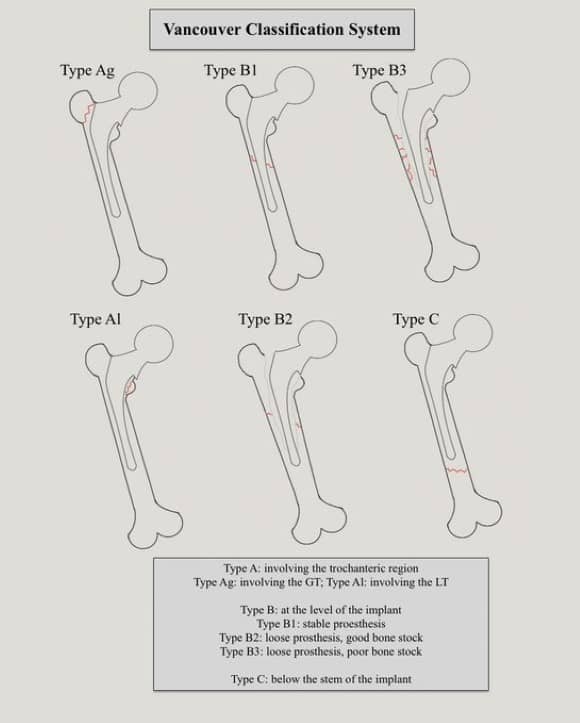
Treatment Considerations:
✯ Stability of prosthesis ✯
✯ Location of fracture
✯ Quality of bone stock
✯ Implant Design
Treatment options:
✯ Conservative (non-operative)
✯ ORIF with plate/screws/cerclage wire
✯ Revision
✯ Revision with internal fixation
A challenge arises when determining if an implant is stable or loose based on radiographs (B1 vs B2/3).
A 2006 @JBJS study by Lindahl et al, showed that the studies radiologist agreed with the orthopedic surgeon's grade of B1 only 34% of the time, 31/90.
In a 2009 @jbjs study by Corten et al, implant stability was tested in 45 fractures classified as Vancouver B1 and 9 of the 45 (20%) were found to be unstable and the operative plan was changed from ORIF to revision.
Type A fractures (involving the trochanteric region)
Minimally displaced AG and AL fractures may be treated non-operatively.
AG fractures with > 2 cm displacement may need to be treated with ORIF, options include wire fixation, cables, and hook plates (shown below).
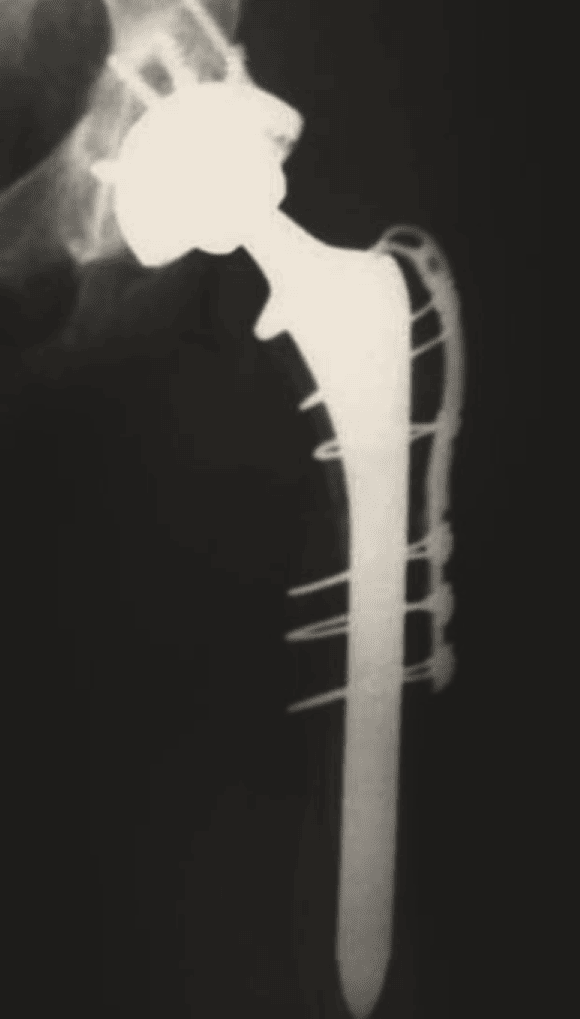
Type B1 and C may be treated with ORIF using plate/ screws and cerclage wire.
Some advocate for revision surgery in a subset of B1 fractures even with a well-fixed prosthesis due to the challenge of achieving and maintaining adequate fixation.
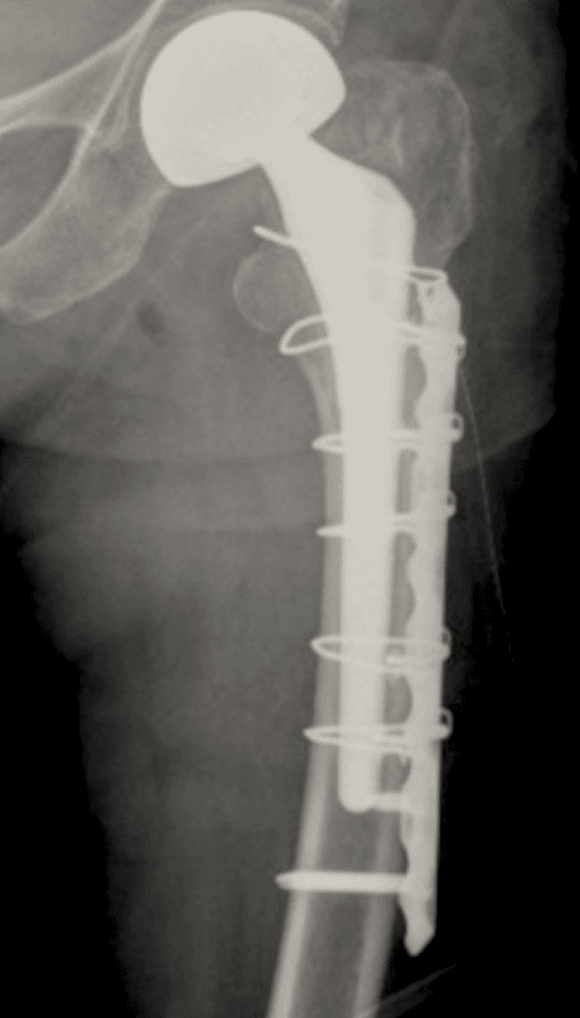
Type B2 (loose implant with good bone stock) are treated with revision to a long-stemmed prosthesis that bypasses the defect with or without internal fixation.
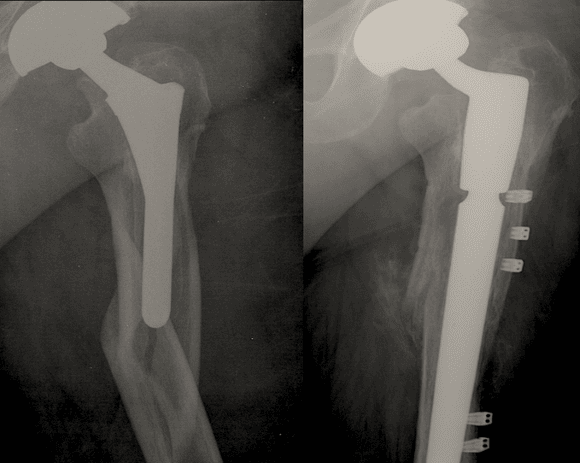
Type B3 (loose implant with inadequate bone stock) may be treated with revision to a longer stemmed implant with allograft or proximal femur replacement (shown below).
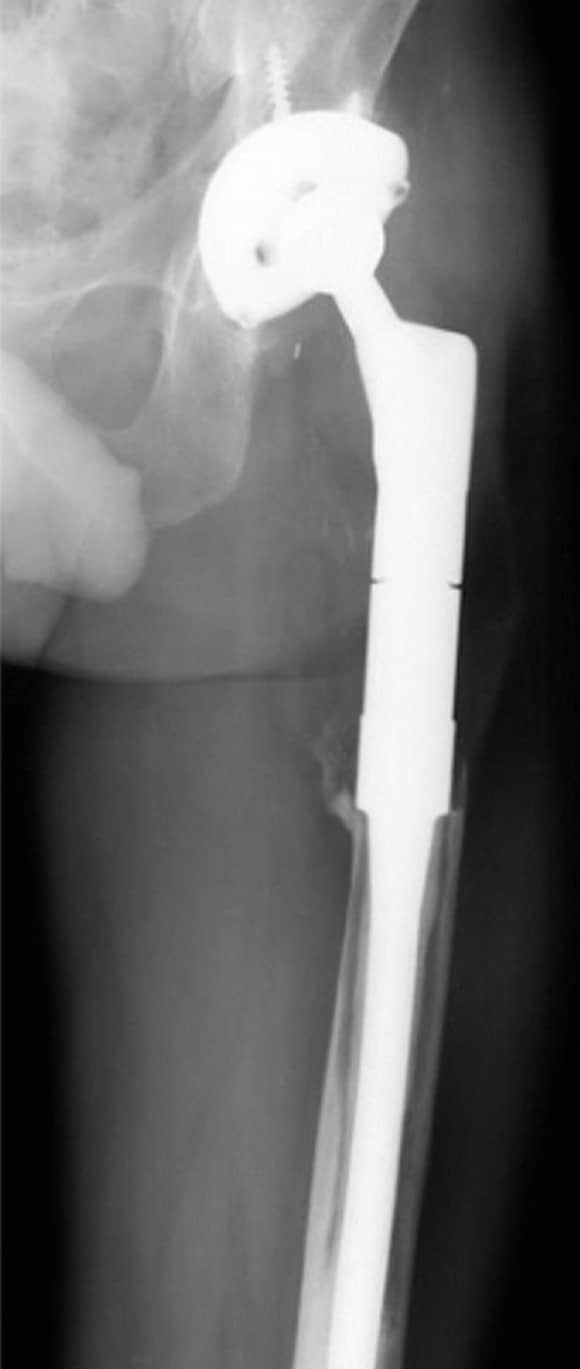
Complications:
✯ Hardware failure: periprosthetic fx produce a challenging environment to obtain and maintain adequate fixation.
✯ Need for revision surgery: may occur due to fractures being misclassified as B1 and treated with ORIF even though the prosthesis was loose (B2)
✯ Creation of a stress riser: a general rule of thumb is that when choosing a plate for ORIF of a periprosthetic fracture it should extend 2-3 diaphyseal diameters distal to the tip of the stem.
*Stress riser: a concentration of stress that occurs at a localized point resulting in an increased risk of fracture
References:
1: https://pubmed.ncbi.nlm.nih.gov/33532088/
2: https://pubmed.ncbi.nlm.nih.gov/16757753/
3: https://pubmed.ncbi.nlm.nih.gov/19880884/
4: https://pubmed.ncbi.nlm.nih.gov/25512137/